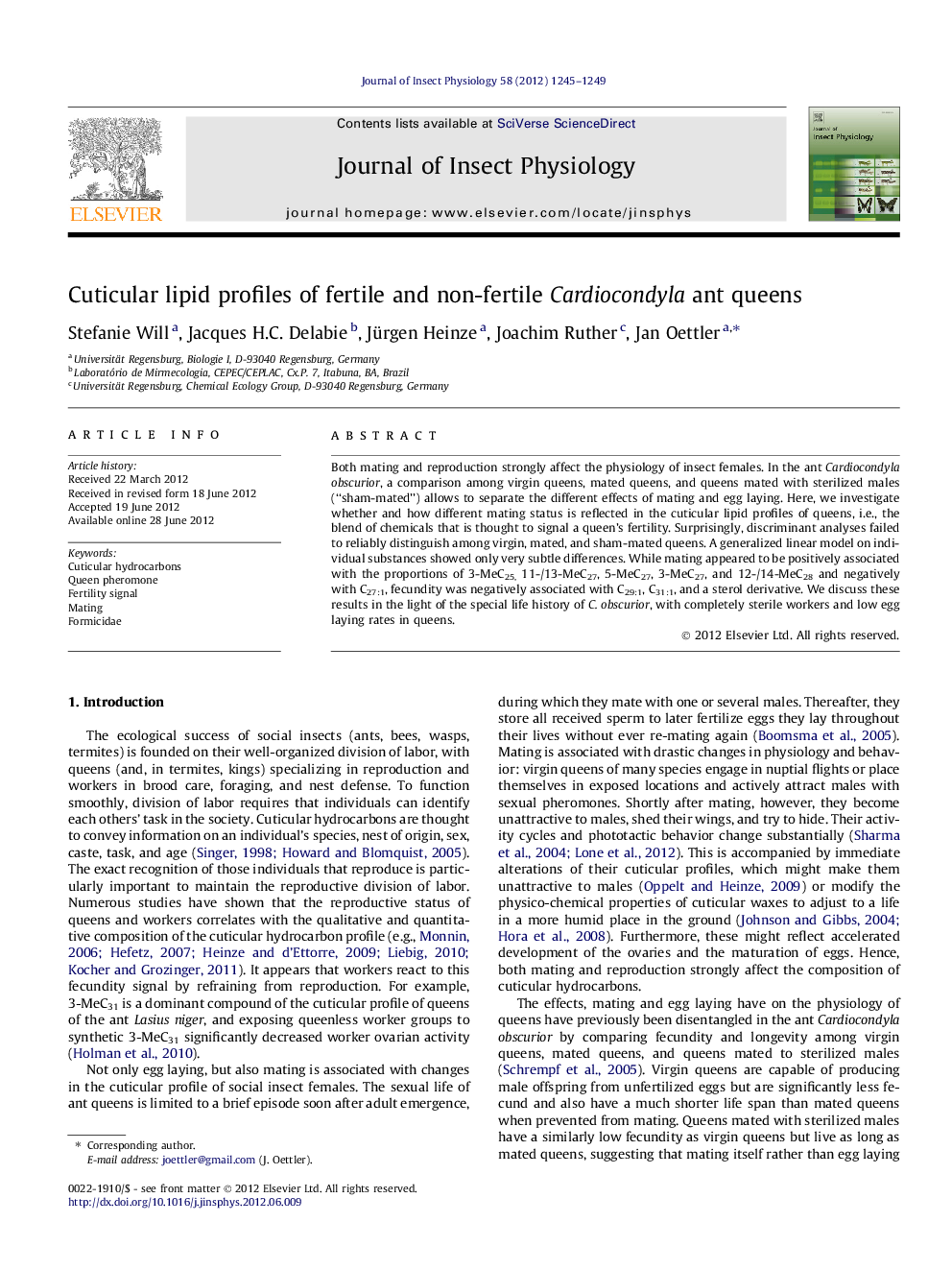| Article ID | Journal | Published Year | Pages | File Type |
|---|---|---|---|---|
| 5921794 | Journal of Insect Physiology | 2012 | 5 Pages |
Both mating and reproduction strongly affect the physiology of insect females. In the ant Cardiocondyla obscurior, a comparison among virgin queens, mated queens, and queens mated with sterilized males (“sham-mated”) allows to separate the different effects of mating and egg laying. Here, we investigate whether and how different mating status is reflected in the cuticular lipid profiles of queens, i.e., the blend of chemicals that is thought to signal a queen's fertility. Surprisingly, discriminant analyses failed to reliably distinguish among virgin, mated, and sham-mated queens. A generalized linear model on individual substances showed only very subtle differences. While mating appeared to be positively associated with the proportions of 3-MeC25, 11-/13-MeC27, 5-MeC27, 3-MeC27, and 12-/14-MeC28 and negatively with C27:1, fecundity was negatively associated with C29:1, C31:1, and a sterol derivative. We discuss these results in the light of the special life history of C. obscurior, with completely sterile workers and low egg laying rates in queens.
Graphical abstractDownload full-size imageHighlights⺠We examine the cuticular profiles of different types of C. obscurior ant queens. ⺠Mating is associated increased proportions of branched alkanes. ⺠Fecundity is negatively associated with the proportions of two alkenes. ⺠The lack of a positive association with fecundity might reflect worker sterility.
